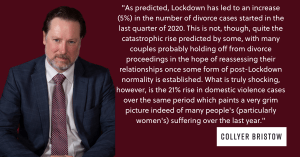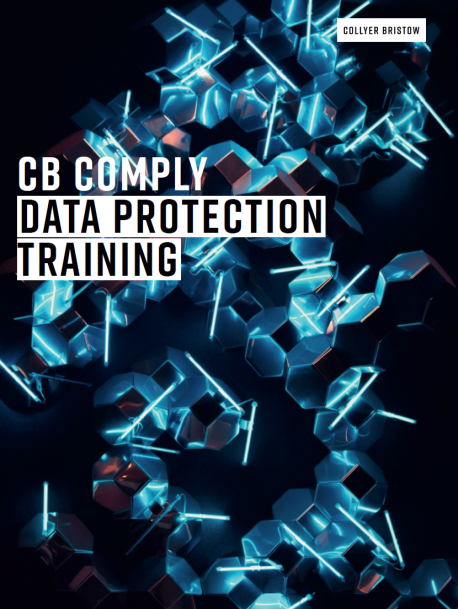- Family and divorce

Shorter Reads
Standish v Standish: Supreme Court to Revisit the Status of Non-Matrimonial Assets on Divorce
Partner Phillipa Dolan comments on Standish v Standish, the Supreme Court case that may reshape how the courts view and divide non-matrimonial assets in divorce.
1 minute read
Published 30 April 2025
Key information
- Specialisms
- Private Wealth
- Services
- Family and divorce
On 30 April and 1 May 2025, the Supreme Court will hear Standish v Standish, a highly anticipated appeal in one of the most significant divorce cases in recent years involving two high net worth individuals. The case centres on whether assets originally held by Mr Standish as non-matrimonial property became matrimonial in nature after being transferred to Mrs Standish as part of a tax planning arrangement in 2017, prior to their divorce. The original trial judge concluded that the assets had been “matrimonialised” and awarded Mrs Standish £45 million. However, the Court of Appeal disagreed, ruling that the majority of the assets should retain their non-matrimonial status, reducing her award by 40% to £25 million. Mrs Standish is now appealing that decision. At stake is not only the outcome for the parties involved, but also how future courts may treat inherited or pre-acquired wealth in the context of financial remedy proceedings. Ahead of the hearing, Phillipa Dolan, Partner in Collyer Bristow’s Family team, offers her commentary on the issues at the heart of this case and what the judgment may mean for divorcing couples going forward.
When does non-matrimonial property become matrimonial property in the context of financial remedy proceedings?
As with everything involving our family court, it’s simply not possible to provide clear guidelines. We cannot repeat too often that judges have a considerable degree of discretion. In general terms, however, we can say that non-matrimonial property is usually treated as matrimonial over the course of a long marriage, particularly where the property has become intermingled or “matrimonialised” and used in whole or in part to support the family. Using the income from non-matrimonial resources such as rent from a second home, is a classic example.
How should the sharing principle be applied to such property?
Once again, the answer is “it depends”. Quite often a judge will just adopt an arbitrary percentage split to reflect the fact that one side has contributed far more financially to the marriage. This has been the case already with Standish. It’s rare for a judge to get out a calculator to decide how property should be divided in those circumstances. He or she tends to respond instinctively to decide on what is fair. It should also be remembered that “need” (yet another highly subjective term) will always trump the principle that non-matrimonial property is ringfenced.
How will the outcome of this case either way impact how matrimonial property is defined?
Standish has already reduced the likelihood that pre-marriage assets will be treated as “matrimonialised”. The Supreme Court will either support this view or restore some of the award of £45m that the High Court judge concluded would be an appropriate share of the husband’s wealth. This was a long marriage but, as always, the facts of a particular case and the behaviour of the couple involved have a significant effect on the outcome. And there’s always an element of gamble.
The Standish v Standish appeal highlights the continuing complexity and discretion involved in dividing assets on divorce, particularly when substantial wealth and non-matrimonial property are in question. As the legal landscape continues to evolve, the Supreme Court’s decision could have a lasting impact on financial remedy proceedings and asset protection strategies. For more insights on how this ruling may affect you or your clients, or to speak with a member of our Family team, please get in touch or visit our Family Law page.
Related content
Shorter Reads
Standish v Standish: Supreme Court to Revisit the Status of Non-Matrimonial Assets on Divorce
Partner Phillipa Dolan comments on Standish v Standish, the Supreme Court case that may reshape how the courts view and divide non-matrimonial assets in divorce.
Published 30 April 2025
Associated sectors / services
Authors
On 30 April and 1 May 2025, the Supreme Court will hear Standish v Standish, a highly anticipated appeal in one of the most significant divorce cases in recent years involving two high net worth individuals. The case centres on whether assets originally held by Mr Standish as non-matrimonial property became matrimonial in nature after being transferred to Mrs Standish as part of a tax planning arrangement in 2017, prior to their divorce. The original trial judge concluded that the assets had been “matrimonialised” and awarded Mrs Standish £45 million. However, the Court of Appeal disagreed, ruling that the majority of the assets should retain their non-matrimonial status, reducing her award by 40% to £25 million. Mrs Standish is now appealing that decision. At stake is not only the outcome for the parties involved, but also how future courts may treat inherited or pre-acquired wealth in the context of financial remedy proceedings. Ahead of the hearing, Phillipa Dolan, Partner in Collyer Bristow’s Family team, offers her commentary on the issues at the heart of this case and what the judgment may mean for divorcing couples going forward.
When does non-matrimonial property become matrimonial property in the context of financial remedy proceedings?
As with everything involving our family court, it’s simply not possible to provide clear guidelines. We cannot repeat too often that judges have a considerable degree of discretion. In general terms, however, we can say that non-matrimonial property is usually treated as matrimonial over the course of a long marriage, particularly where the property has become intermingled or “matrimonialised” and used in whole or in part to support the family. Using the income from non-matrimonial resources such as rent from a second home, is a classic example.
How should the sharing principle be applied to such property?
Once again, the answer is “it depends”. Quite often a judge will just adopt an arbitrary percentage split to reflect the fact that one side has contributed far more financially to the marriage. This has been the case already with Standish. It’s rare for a judge to get out a calculator to decide how property should be divided in those circumstances. He or she tends to respond instinctively to decide on what is fair. It should also be remembered that “need” (yet another highly subjective term) will always trump the principle that non-matrimonial property is ringfenced.
How will the outcome of this case either way impact how matrimonial property is defined?
Standish has already reduced the likelihood that pre-marriage assets will be treated as “matrimonialised”. The Supreme Court will either support this view or restore some of the award of £45m that the High Court judge concluded would be an appropriate share of the husband’s wealth. This was a long marriage but, as always, the facts of a particular case and the behaviour of the couple involved have a significant effect on the outcome. And there’s always an element of gamble.
The Standish v Standish appeal highlights the continuing complexity and discretion involved in dividing assets on divorce, particularly when substantial wealth and non-matrimonial property are in question. As the legal landscape continues to evolve, the Supreme Court’s decision could have a lasting impact on financial remedy proceedings and asset protection strategies. For more insights on how this ruling may affect you or your clients, or to speak with a member of our Family team, please get in touch or visit our Family Law page.
Associated sectors / services
- Family and divorce
Authors
Need some more information? Make an enquiry below.
Subscribe
Please add your details and your areas of interest below
Article contributors
Philippa
DolanPartner
Specialising in Family & divorceToby
YerburghPartner - Head of Family Law
Specialising in Family & divorce
Enjoy reading our articles? why not subscribe to notifications so you’ll never miss one?
Subscribe to our articlesMessage us on WhatsApp (calling not available)
Please note that Collyer Bristow provides this service during office hours for general information and enquiries only and that no legal or other professional advice will be provided over the WhatsApp platform. Please also note that if you choose to use this platform your personal data is likely to be processed outside the UK and EEA, including in the US. Appropriate legal or other professional opinion should be taken before taking or omitting to take any action in respect of any specific problem. Collyer Bristow LLP accepts no liability for any loss or damage which may arise from reliance on information provided. All information will be deleted immediately upon completion of a conversation.
Close

















































